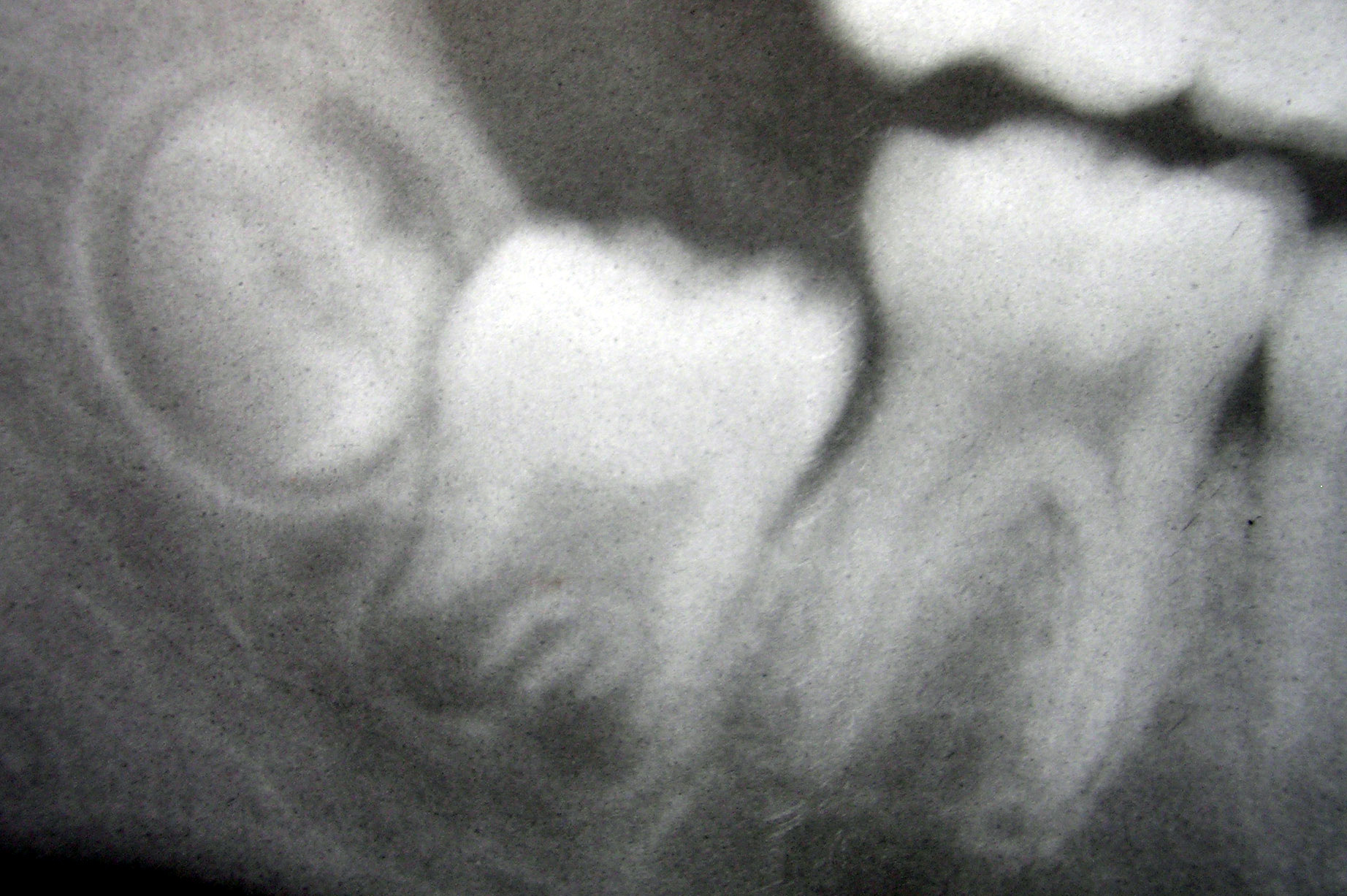|
Obdurodon Insignis
''Obdurodon'' is a genus of extinct platypus-like Australian monotreme which lived from the Late Oligocene to the Late Miocene. Three species have been described in the genus, the type species ''Obdurodon insignis'', plus ''Obdurodon dicksoni'' and ''Obdurodon tharalkooschild''. The species appeared much like their modern day relative the platypus, except adults retained their molar teeth, and unlike the platypus, which forages on the lakebed, they may have foraged in the water column or surface. Taxonomy The ''Obdurodon insignis'' holotype specimen, SAM P18087, a tooth, was uncovered in 1971 from the Etadunna Formation in the Tirari Desert of South Australia. The second specimen discovered there, AMNH 97228, is an upper right molar. In total, 4 specimens are reported, dating from the Oligocene to the Pliocene. The holotype tooth was placed into the newly erected genus ''Obdurodon'' upon description in 1975 by American palaeontologists Michael O. Woodburne and Richard H. T ... [...More Info...] [...Related Items...] OR: [Wikipedia] [Google] [Baidu] |
Late Oligocene
The Chattian is, in the geologic timescale, the younger of two ages or upper of two stages of the Oligocene Epoch/ Series. It spans the time between . The Chattian is preceded by the Rupelian and is followed by the Aquitanian (the lowest stage of the Miocene). Stratigraphic definition The Chattian was introduced by Austrian palaeontologist Theodor Fuchs in 1894. Fuchs named the stage after the Chatti, a Germanic tribe.Berry, Edward W"The Mayence Basin, a Chapter of Geologic History" ''The Scientific Monthly'', Vol. 16, No. 2, February 1923. pp. 114. Retrieved March 18, 2020. The original type locality was near the German city of Kassel. The base of the Chattian is at the extinction of the foram genus ''Chiloguembelina'' (which is also the base of foram biozone P21b). An official GSSP for the Chattian Stage was ratified in October of 2016. The top of the Chattian Stage (which is the base of the Aquitanian Stage, Miocene Series and Neogene System) is at the first appeara ... [...More Info...] [...Related Items...] OR: [Wikipedia] [Google] [Baidu] |
Ornithorhynchidae
The Ornithorhynchidae are one of the two extant families in the order Monotremata, and contain the platypus and its extinct relatives. The other family is the Tachyglossidae, or echidnas. Within the Ornithorhynchidae are the genera '' Monotrematum'', ''Obdurodon'', and ''Ornithorhynchus'': *Family Ornithorhynchidae **Genus † ''Monotrematum'' ***†''Monotrematum sudamericanum'' **Genus †''Obdurodon'' — an ancient branch of the platypus family ***†'' Obdurodon dicksoni'' ***†''Obdurodon insignis'' ***†''Obdurodon tharalkooschild'' **Genus ''Ornithorhynchus'' ***''Ornithorhynchus anatinus'' (the modern platypus) Another two genera, '' Steropodon'' and '' Teinolophos'', were originally thought to belong to the Ornithorhynchidae. However, they were both placed into a new family, the Steropodontidae. This decision was made based on differences in the dentary recovered from the Griman Creek Formation, Lightning Ridge, New South Wales, Australia. This dentary is the ho ... [...More Info...] [...Related Items...] OR: [Wikipedia] [Google] [Baidu] |
Karst
Karst is a topography formed from the dissolution of soluble rocks such as limestone, Dolomite (rock), dolomite, and gypsum. It is characterized by underground drainage systems with sinkholes and caves. It has also been documented for more weathering-resistant rocks, such as quartzite, given the right conditions. Subterranean drainage may limit surface water, with few to no rivers or lakes. However, in regions where the dissolved bedrock is covered (perhaps by debris) or confined by one or more superimposed non-soluble rock strata, distinctive karst features may occur only at subsurface levels and can be totally missing above ground. The study of ''paleokarst'' (buried karst in the stratigraphic column) is important in petroleum geology because as much as 50% of the world's hydrocarbon reserves are hosted in carbonate rock, and much of this is found in porous karst systems. Etymology The English word ''karst'' was borrowed from German language, German in the late 19th century, ... [...More Info...] [...Related Items...] OR: [Wikipedia] [Google] [Baidu] |
Riversleigh Fauna
Riversleigh fauna is the collective term for any species of animal identified in fossil sites located in the Riversleigh World Heritage Area. Faunal zones The presence of the Riversleigh in the Oligo-Miocene has been exceptionally well preserved throughout a number of time periods. These has been classified by four "faunal zones", and may be summarised as, * Faunal Zone A (FZA): late Oligocene, a period 23.03–28.4 million years before present * Faunal Zone B (FZB): early Miocene, 15.97-23.03 myr * Faunal Zone C (FZC): middle Miocene, 11.608-15.97 myr * Faunal Zone D (FZD): late Miocene, 5.332-11.608 myr More recent fossil specimens has also been coded to the period of deposition, * Pliocene (PLIO), a period 2.588-5.332 myr * Pleistocene (PLEIS), 0.0117-2.588 myr * Holocene, noted as (HOLO) to indicate the period dated as following the Pleistocene, from the present day to 11,700 years ago. Faunal lists The following are incomplete lists of mammals, birds, fish, and invertebra ... [...More Info...] [...Related Items...] OR: [Wikipedia] [Google] [Baidu] |
Steropodon Galmani
''Steropodon'' is a genus of prehistoric monotreme, or egg-laying mammal. It contains a single species, ''Steropodon galmani'', that lived about 105 to 93.3 million years ago (mya) in the Early to Late Cretaceous period. It is one of the oldest monotremes discovered, and is one of the oldest Australian mammal discoveries. Taxonomy The dentition of ''Steropodon'' is somewhat similar to that of therians—the placentals and the marsupials—specifically the presence of the tribosphenic molar tooth which was thought to be exclusive to therians since the Cretaceous. This, along with the tribosphenic molar discoveries of monotreme-relatives '' Ausktribosphenos'' and '' Ambondro mahabo'' of which the latter evolved in the Jurassic, led to the conclusion that the molar evolved independently in the two lineages. This inspired the creation of the subclasses Australosphenida—the monotremes and extinct relatives—and Tribosphenida—placentals and marsupials. However, given this cla ... [...More Info...] [...Related Items...] OR: [Wikipedia] [Google] [Baidu] |
Tooth Root
Dental anatomy is a field of anatomy dedicated to the study of human tooth structures. The development, appearance, and classification of teeth fall within its purview. (The function of teeth as they contact one another falls elsewhere, under dental occlusion.) Tooth formation begins before birth, and the teeth's eventual morphology is dictated during this time. Dental anatomy is also a taxonomical science: it is concerned with the naming of teeth and the structures of which they are made, this information serving a practical purpose in dental treatment. Usually, there are 20 primary ("baby") teeth and 32 permanent teeth, the last four being third molars or "wisdom teeth", each of which may or may not grow in. Among primary teeth, 10 usually are found in the maxilla (upper jaw) and the other 10 in the mandible (lower jaw). Among permanent teeth, 16 are found in the maxilla and the other 16 in the mandible. Each tooth has specific distinguishing features. Growing of tooth ... [...More Info...] [...Related Items...] OR: [Wikipedia] [Google] [Baidu] |
Rakali
The rakali (''Hydromys chrysogaster)'', also known as the rabe or water-rat, is an Australian native rodent first described in 1804. Adoption of the Aboriginal name Rakali is intended to foster a positive public attitude by Environment Australia. One of four described species in the genus '' Hydromys'', it is the only one with a range extending beyond Papua New Guinea and Indonesian West Papua. Having adapted to and colonised a unique niche of a semiaquatic and nocturnal lifestyle, this species lives in burrows on the banks of rivers, lakes and estuaries and feeds on aquatic insects, fish, crustaceans, mussels, snails, frogs, birds' eggs and water birds. Rakali have a body in length, weigh , and have a thick tail measuring around . Females are generally smaller than males but tail lengths are normally the same. They have partially webbed hind legs, waterproof fur, a flattened head, a long blunt nose, many whiskers and small ears and eyes. The body is streamlined with a skull t ... [...More Info...] [...Related Items...] OR: [Wikipedia] [Google] [Baidu] |
Australian Aboriginal Mythology
Australian Aboriginal religion and mythology is the sacred spirituality represented in the stories performed by Aboriginal Australians within each of the language groups across Australia in their ceremonies. Aboriginal spirituality includes the Dreamtime (''the Dreaming''), songlines, and Aboriginal oral literature. Aboriginal spirituality often conveys descriptions of each group's local cultural landscape, adding meaning to the whole country's topography from oral history told by ancestors from some of the earliest recorded history. Most of these spiritualities belong to specific groups, but some span the whole continent in one form or another. Antiquity An Australian linguist, R. M. W. Dixon, recording Aboriginal myths in their original languages, encountered coincidences between some of the landscape details being told about within various myths, and scientific discoveries being made about the same landscapes. In the case of the Atherton Tableland, myths tell of the o ... [...More Info...] [...Related Items...] OR: [Wikipedia] [Google] [Baidu] |
Suzanne Hand
Suzanne J. Hand (born 1955) is an associate professor at the University of New South Wales, a teacher of geology and biology, who has a special interest in vertebrate palaeontology and modern mammals. Her research has been published in over a hundred articles, and is especially focused on the subjects of evolutionary biology, functional morphology, phylogenetics, and biogeography. Hand is a co-leader of the research team investigating the Riversleigh World Heritage Area, regarded as one of the four most important sites of fossil-bearing formations in the world. Amongst the recognition of Hand's contributions is the specific epithet of a fossil species of bird, ''Eoanseranas handae '' Eoanseranas handae'', also sometimes referred to as Hand's dawn magpie goose, is an extinct genus and species of bird. Allied to the family Anseranatidae, which are represented by modern magpie geese, it existed during the Late Oligocene or ...'', discovered in the Riversleigh fossil sites. R ... [...More Info...] [...Related Items...] OR: [Wikipedia] [Google] [Baidu] |
Mike Archer (paleontologist)
Professor Michael Archer AM, FAA, Dist FRSN (born 1945, Sydney, New South Wales) is an Australian paleontologist specialising in Australian vertebrates. He is a professor at the School of Biological, Earth & Environmental Sciences, University of New South Wales. His previous appointments include Director of the Australian Museum 1999–2004 and Dean of Science at the University of New South Wales 2004–2009. Education and career Archer was born in Sydney but raised in the United States and studied at Princeton University. From 1972 to 1978, he was the curator of mammals at the Queensland Museum. Since 1983, he has been involved with the exploration of the Riversleigh fossil site in Queensland. He is opposed to creationism and regularly engages in active debates with creationists. During his time as director of the Australian Museum, he was the initiator of attempts to clone the '' Thylacinus cynocephalus'', the Tasmanian tiger, an animal extinct since 1936. Archer has st ... [...More Info...] [...Related Items...] OR: [Wikipedia] [Google] [Baidu] |
University Of New South Wales
The University of New South Wales (UNSW), also known as UNSW Sydney, is a public research university based in Sydney, New South Wales, Australia. It is one of the founding members of Group of Eight, a coalition of Australian research-intensive universities. Established in 1949, UNSW is a research university, ranked 44th in the world in the 2021 ''QS World University Rankings'' and 67th in the world in the 2021 ''Times Higher Education World University Rankings''. It is one of the members of Universitas 21, a global network of research universities. It has international exchange and research partnerships with over 200 universities around the world. According to the 2021 QS World University Rankings by Subject, UNSW is ranked top 20 in the world for Law, Accounting and Finance, and 1st in Australia for Mathematics, Engineering and Technology. UNSW is also one of the leading Australian universities in Medicine, where the median ATAR (Australian university entrance examination ... [...More Info...] [...Related Items...] OR: [Wikipedia] [Google] [Baidu] |
.jpg)


.jpg)

